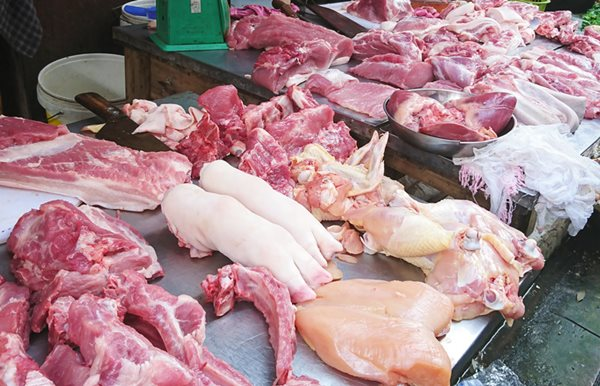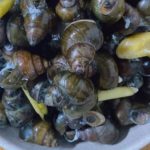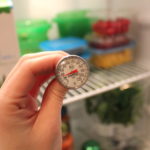Pork or beef mince is often purchased in advance by many people because it is convenient, can be used anytime, and can be cooked in many dishes: fried/grilled meatballs with rice or in bun cha; cooked with noodles, made into hamburger sandwiches, fried with eggs… These dishes are usually soft and easy to eat, so many families with children or elderly people often buy minced meat for processing.

However, ready-made minced meat outside the market or even supermarkets can harbor many health risks, especially when vendors mix scraps of meat, spoiled meat, or meat that is no longer fresh to grind together. Moreover, you cannot be sure if the meat grinder has been properly cleaned.
Why is minced meat more harmful to health than many other types of meat?
Mincemeat can cause more diseases than whole pieces of meat for several reasons:
The problem starts from the processing plant, where meat from many animals is ground together. “Even if it’s just meat from one animal contaminated with harmful bacteria like E. coli or salmonella, those bacteria can spread to all minced meat,” explained Dr. James E. Rogers, Director of the Center for Food Safety Research and Testing, former staff of the U.S. Department of Agriculture.
In addition, when a piece of beef, pork, or chicken breast is contaminated with bacteria, the bacteria are usually on the surface, where they can be easily destroyed when cooked. But in minced meat, the bacteria are evenly mixed. If you use that minced meat to grill a rare burger or make undercooked chicken sausages, you can cause yourself and others who eat them to get seriously ill.
Moreover, when you use your hands to shape minced meat into patties or kebabs, you may come into contact with more minced meat than with whole meat, so there is a higher chance of bacteria spreading from your hands and the utensils or surfaces you use to other foods.
Some other pork parts should also be limited when buying them at the market:
Pork liver
Pork liver contains a lot of protein and cholesterol, which is not beneficial for people with heart disease, diabetes, high blood cholesterol, and metabolic disorders.
Not only that, if you accidentally buy poor-quality pork liver that does not guarantee food safety and hygiene, even healthy people who eat it may face many health problems.

Some establishments may process internal organs of animals in unhygienic conditions, contaminated with many types of worms, bacteria, and viruses harmful to humans. If you accidentally eat these types of offal, you are at risk of being infected with worms and many other diseases. In addition, many vendors use chemicals to remove odors and bleach pork liver, increasing the risk of chemical accumulation in the bodies of consumers. Therefore, if you want to eat pork liver, choose reputable, reliable establishments, and it is best to understand the origin of the pig and bring it home to clean and process by yourself.
Pork lungs
Pigs are animals that live close to the ground and often inhale a large amount of dust, dirt, and heavy metals. Therefore, when eating pork lungs, the dirt and heavy metal particles will enter our bodies and harm our health.
Pork lungs are susceptible to contamination, so they should be limited when eating. (Illustrative photo)
In addition, pigs often inhale dust and many parasites, epidemics, bacteria, and viruses continuously enter their lungs. During processing, we cannot completely clean them even when rinsing. Therefore, careful consideration is needed before using pork lungs as food.
Pork neck
The neck meat often contains lymph nodes – it has an unpleasant odor and is prone to harboring bacteria and viruses that can directly transmit diseases to consumers and are not easily destroyed even when cooked at high temperatures.
In addition, when butchering pigs, people often pierce or slit the glands in the neck area, so there is a lot of blood accumulation in this area. This is also the position where pigs are often injected with drugs.
Strategies for Quickly and Efficiently Utilizing Leftover Food After Tet
With Tet now behind us, housewives everywhere are facing the challenge of what to do with leftover food. It’s a difficult decision – throwing it away is a waste, yet keeping it can lead to eating the same dishes day after day. But don’t fret – it’s time to take a trip to the kitchen and get creative with all of that leftover food!




































